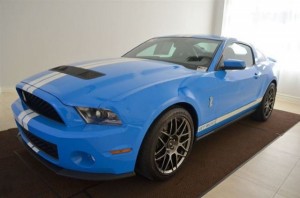Used Car Prices – When New cars are a better deal than Used?

The past year and current used car market has demonstrated new price levels at all-time highs, making consumers and dealership used car managers very nervous. The concern among many in the automotive business is when or will the bubble burst? More important than the crystal ball on the price of used cars, is what should car buyers do in this market?
Why are used car prices so high?
In the past many late model pre-owned vehicles came from rental car turn-over and off-lease vehicles, however, years 2008 and 2009 were the lowest lease years in my recent memory. Hence, three and four years later, the number of off-lease vehicles hitting the market is at an all time low.
The second part of the lack of off-lease vehicles making it to market is the disparity between the residual value of the leased vehicle and its current street value. As a result, the leasee is electing to purchase their vehicle or extend the lease term at it’s current payment, driven by uncertainty in the economy.
Add to these scenarios the aging fleet of over 100k mile vehicles, held beyond normal ownership cycles and being traded for new models when the repair estimates exceed thirty percent of the value of the car.
The next move in car buying; New vs. Used?
Given the reviving economy and pent-up demand of car shoppers, the new car manufacturers are increasing production of 2012 and 2013 models as material and parts suppliers’ ramp up for pent-up demand. Auto industry analysts suggest new car sales will mark a 14 million unit record this year, however to do this, consumers must be educated to where the deals, including
2012 leases, are.
The lack of selection of nice, clean, low mile used cars combined with high pre-owned prices are taking the appeal of perceived used car savings off the table making a new car deal alot closer when a used car price reflects a variance of less than 20% over the net new car price.
Traditional used car buyers often quote the depreciation suffered by the first time owner as a reason to buy a second-hand car. However, thanks to the internet, auto brokers and car buyer agents, the discrepancy between the net prices paid for a new car versus current used car prices makes the new car buy a better deal. Add to this equation the increased length of new car warranty term and free scheduled service plans now included by many auto manufacturers, the scales tip even further towards a new car purchase.
When combining increased rebates, interest rate incentives, and higher than usual trade-in values with the ability to have more selection of new cars on the dealer’s lots, the additional cost for a used car extended service contract or
certified pre-owned warranty also requires further scrutiny.
The caveat to this debate of new car vs. used certified pre-owned may be the luxury exotics of
Porsche, Aston-Martin, Maserati, Ferrari and Bentley, where the volume of new car availability is severely limited.
The car banks are anxious to lend, not only to spur new car sales and increase brand market share, but this is not without scrutiny of credit reports, bank balances and local economic situations.
Regardless of 720 and higher credit scores; banks want money down to allay their fears of vehicle value inequity from optional equipment, fees and taxes. Those car buyers who have experienced credit challenges of late will find higher interest rates, a need for a minimum 20% down payment; cash or trade-in and proof of all income. Second chance or bad credit car loans are caught between the high used car prices, high mileage odometers and the banks demand for up to 40% cash down, bank statements, tax returns and employer interviews.
As we approach the
Memorial Day holiday and start of the summer car selling season, car buyers must be prepared to rethink their car shopping list as the reality of the highly competitive used car market changes the deal on car lots across the country.
————————————————————————-
]]>
